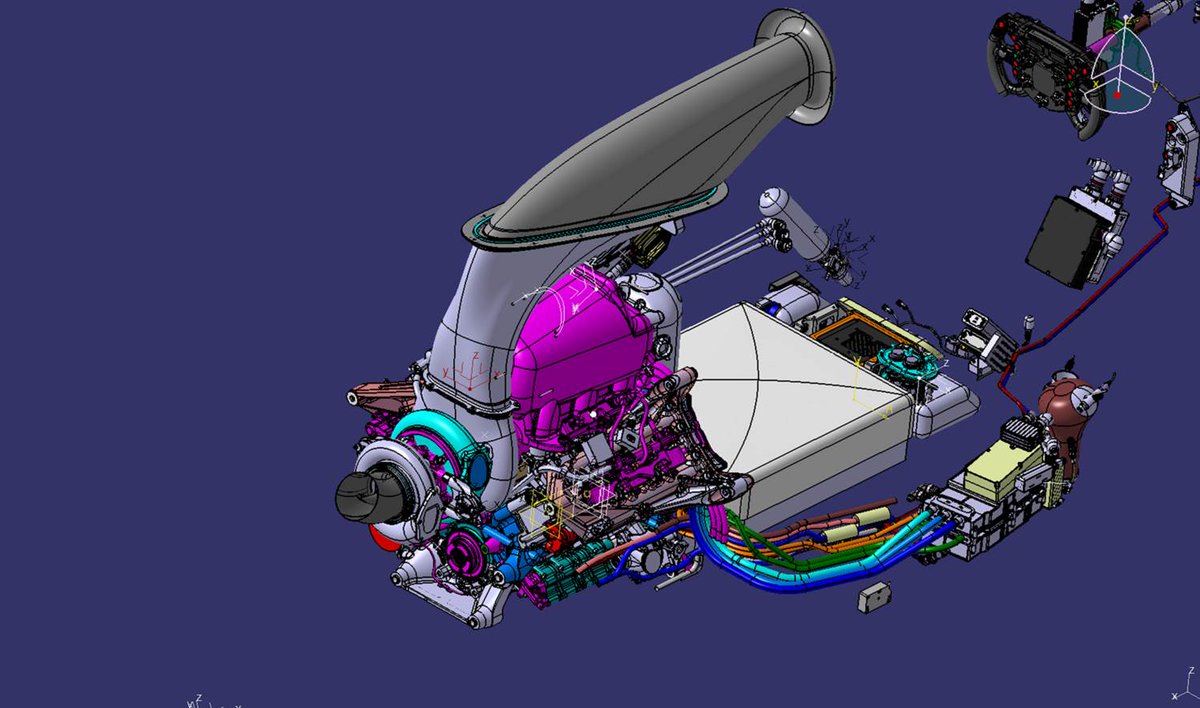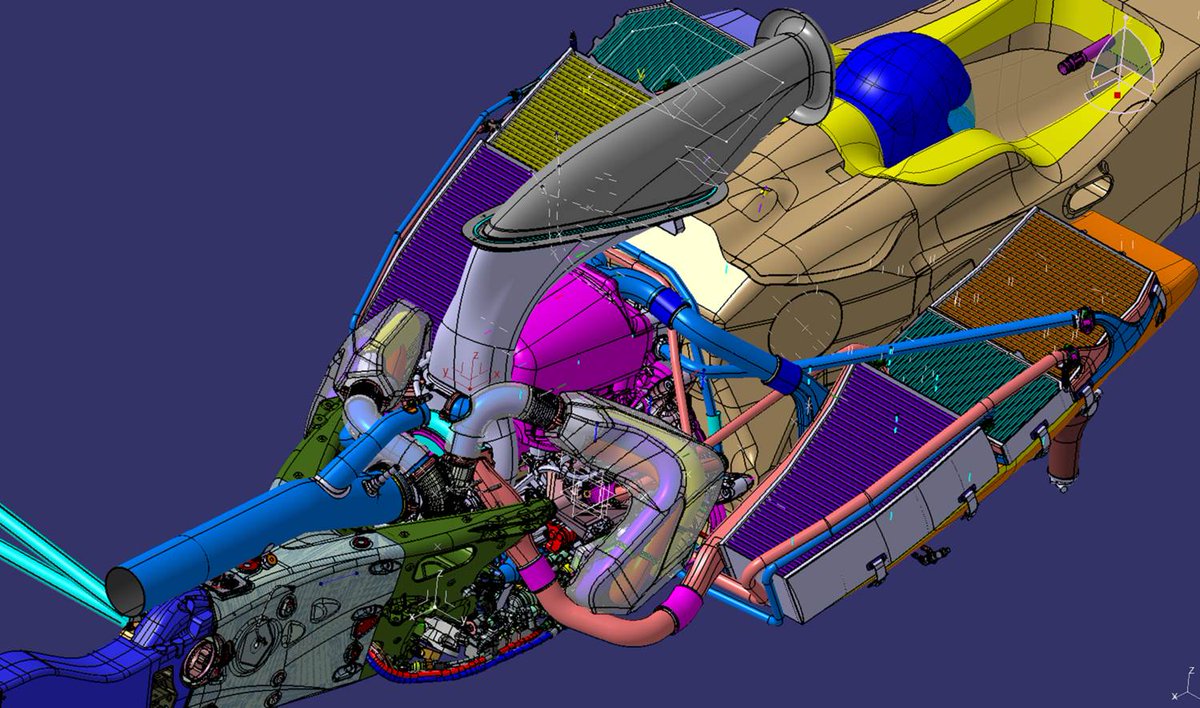The rules say something to the effect of only the MGU-H may be mechanically linked to the turbine, and the compressor must be single stage. The MGU-H must be mechanically connected by fixed clutchable gear to the turbine and nothing else. The only freebie is the MGU-K, which can receive power from the H, from the engine crank and from engine ancillaries. The engine ancillaries are unlimited in energy transfer from engine to ancillary but from ancillary to K and from K to ancillary it's limited to 120kW.PlatinumZealot wrote:You could have a second "booster" turbine connected to the compressor shaft that uses the accumulated air pressure to spin up the compressor. It would not be piped to the main air stream but simply blows thru this booster turbine to atmosphere.wuzak wrote:I think that is not allowed:PlatinumZealot wrote:
I thought FW17 was implying using the stored air pressure to boost the engine through the compressor inlet so i was never thinking of conversion to electrical energy. So the system would be separate from the ERS. Basically a cheat system.
5.1.6 Pressure charging may only be effected by the use of a sole single stage compressor linked to a sole single stage exhaust turbine by a shaft assembly parallel to the engine crankshaft and within 25mm of the car centre line. The shaft must be designed so as to ensure that the shaft assembly, the compressor and the turbine always rotate about a common axis and at the same angular velocity, an electrical motor generator (MGU-H) may be directly coupled to it. The shaft may not be mechanically linked to any other device.
Almost like flywheel kers to the compressor except it is accumulated air pressure. In fact.. It probably more efficcient to use the compressed air to spin up a flywheel in one shot without accumulation tank then directly apply that flywheel to spin up the compressor shaft.
I dont the rules say you are forbidden from spinning up the compressor with other energy sources did it?
- Login or Register
No account yet? Sign up





